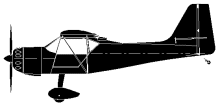
ASN Wikibase Occurrence # 287870
This information is added by users of ASN. Neither ASN nor the Flight Safety Foundation are responsible for the completeness or correctness of this information.
If you feel this information is incomplete or incorrect, you can submit corrected information.
| Date: | Thursday 23 December 2010 |
| Time: | 14:21 LT |
| Type: |  Denney Kitfox 4 |
| Owner/operator: | |
| Registration: | N95FT |
| MSN: | 1557 |
| Total airframe hrs: | 52 hours |
| Engine model: | Great Plains/Volkswagen |
| Fatalities: | Fatalities: 0 / Occupants: 1 |
| Aircraft damage: | Substantial |
| Category: | Accident |
| Location: | Glendale, Arizona -
 United States of America United States of America
|
| Phase: | Take off |
| Nature: | Private |
| Departure airport: | Glendale Municipal Airport, AZ (KGEU) |
| Glendale Municipal Airport, AZ (KGEU) | |
| Investigating agency: | NTSB |
| Confidence Rating: |
The owner/pilot of the experimental amateur-built kit airplane was cleared by the air traffic controller to take off and remain in the traffic pattern for practice. Witnesses reported that the airplane climbed to about 200 feet above the runway before it banked sharply to the right and descended rapidly to ground impact. The impact location was offset about 300 feet from the runway centerline and was about 2,400 feet down the 7,150 foot long runway. The airplane motion, trajectory, and impact angle were consistent with an aerodynamic stall. The wind was calm, the density altitude was about 1,340 feet, and the airplane was about 380 pounds below its maximum gross weight of 1,350 pounds.
Several days after the accident, the pilot stated that he intentionally attempted to take off using partial engine power. The kit manufacturer's published guidance for the airplane contained conflicting information regarding the amount of power to be used for takeoff. The checklist section specified full power for takeoff. In contrast, the "Flight Tips" section instructed "new" pilots to "restrict take-off power to about 75% of full power" but did not provide any elaborating information. The guidance specified climb speeds between 45 and 65 mph and a clean power-off stall speed of 38 mph. The airplane was not equipped with either a stall warning or angle-of-attack indication system, and it was not required to be so equipped. Had the pilot recognized and correctly reacted to the impending stall, either by adding power, pushing the airplane nose down, or both, it is likely that the accident would not have occurred. The investigation was unable to determine the accuracy of the airspeed indication system or the actual stall speeds or stall characteristics of the airplane.
Probable Cause: The pilot's failure to recognize the onset of and to prevent an aerodynamic stall at low altitude. Contributing to the accident were the manufacturer's conflicting guidance about the power setting for takeoff and the pilot's decision to conduct a partial-power takeoff.
Accident investigation:
 |
|
Sources:
NTSB WPR11LA080
Location
Revision history:
| Date/time | Contributor | Updates |
|---|---|---|
| 04-Oct-2022 16:16 | ASN Update Bot | Added |
Corrections or additions? ... Edit this accident description
The Aviation Safety Network is an exclusive service provided by:


 ©2024 Flight Safety Foundation
©2024 Flight Safety Foundation